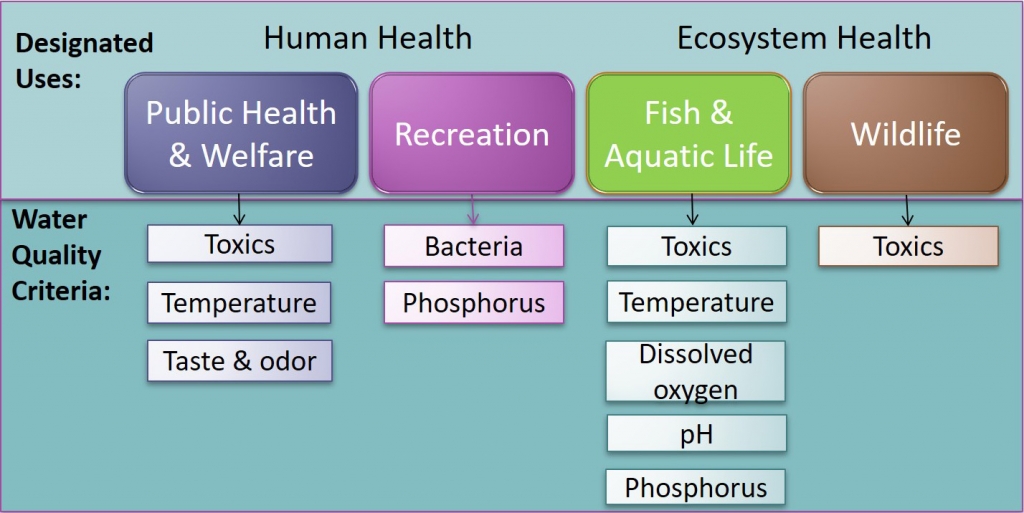Water Quality Criteria
The Clean Water Act requires states to adopt water quality standards to protect aquatic life, wildlife and recreation. Water quality standards consist of three components: antidegradation, designated uses and water quality criteria. Water quality criteria represent the quality of water that supports a particular designated use.
Water quality criteria are either narrative or numeric
Narrative criteria are statements that describe the desired water quality goal.
Numeric criteria are benchmarks set at a level of a pollutant that is protective of the designated use.
Wisconsin's narrative criteria apply to Wisconsin's lakes, rivers and streams. These criteria address pollutants such as:
- floating or submerged debris, oil, scum or other material;
- substances that cause objectionable deposits on the shore or in the bed of a body of water;
- substances that produce color, odor, taste or unsightliness;
- substances in amounts which are toxic or harmful to humans; and
- substances in amounts that are harmful to animal, plant or aquatic life.
Types of criteria for Wisconsin's lakes, rivers and streams
Wisconsin's numeric criteria are designed to protect a particular use for a given waterbody.

Public health and welfare criteria
- Toxics: Protect people from cancer or other effects caused by long-term exposure to eating contaminated fish or drinking contaminated water.
- Temperature: Protect people from being scalded
- Taste & odor: Limit objectionable tastes or odors of water and fish
Recreation criteria
- Bacteria: Protect people from illness caused by exposure to bacteria from contamination by human waste
- Phosphorus: Protect recreation by reducing the frequency of algal blooms
Wildlife criteria
- Toxics: Protect fishing eating animals from effects caused by long-term exposure to eating contaminated fish and drinking contaminated water
Aquatic life criteria
- Toxics: Protect aquatic organisms from adverse effects caused by short and long term exposure to contaminated water
- pH: Protect aquatic organisms from changes in pH
- Temperature: Protect aquatic organisms from effects caused by short- and long-term exposure to high temperatures.
- Dissolved oxygen: Protect aquatic organisms from changes in dissolved oxygen concentrations
- Phosphorous: Protect aquatic organisms from the effects of nutrients and algae on habitat
Links to criteria in Wis. Admin. Code
- NR 102 contains criteria for phosphorus, dissolved oxygen, pH, bacteria and temperature. It also contains the narrative criteria described above.
- NR 103 contains water quality standards for wetlands.
- NR 104 contains a list of waterbodies designated as "limited" and certain water quality standards that apply to those waters (additional standards applying to “limited” waters are contained in NR 102 and 105).
- NR 105 contains criteria for a wide variety of toxic substances.
